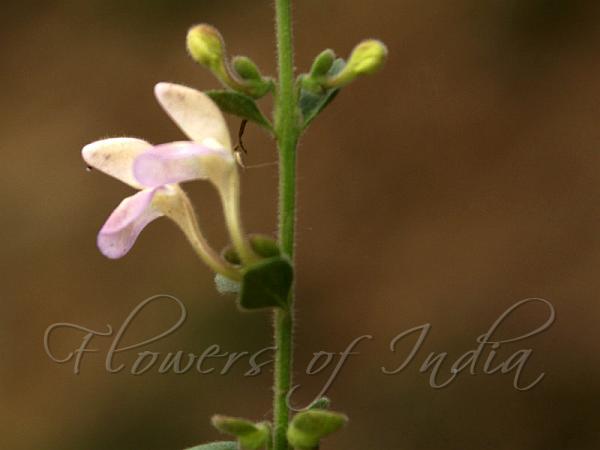|
| Creeping Skullcap |
|

|

| File size | 56736 |
| Original date | 4/10/11 1:00 PM |
| Resolution | 800 x 600 |
| Flash | Flash did not fire, auto |
| Focal length | 70.0mm |
| Exposure time | 1/250s |
| Aperture | 6.3 |
| Focus Distance | |
| Metering Mode | Multi-segment |
| Camera make | SONY |
| Camera model | DSLR-A100 |
| Sensor type |
|
|
|
|
Photo: |
Botanical name: Scutellaria repens Family: Lamiaceae (Mint family)
Synonyms: Scutellaria cana, Scutellaria wallichiana
Synonyms: Scutellaria cana, Scutellaria wallichiana
Creeping Skullcap is a perennial, scrambling,
somewhat woody herb. Stems are up to 1.5 m long, rising, quadrangular,
leafy, with usually lateral flowering branches. They are covered with
long, white hairs, usually with patent, glandular hairs above. Lower
leaves are narrow oblong-ovate, 0.9-4.5 cm long, 0.6-1.9 cm broad,
decreasing in size up the stem, toothed, pointed at the tip, with
rounded-wedge-shaped base. Upper leaves are broad oblong-ovate, 2-6 x
2-3 mm, entire, wedge-shaped, blunt or pointed. Lower leaf stalks about
2-10 mm long. Inflorescences are lax, in leaf axils. Flowers are
arranged only one one side of the spikes, in axils of upper, bract-like
leaves. Flower-stalks are 2-4 mm, erect or spreading-erect, usually
with small basal scales, sometimes flattened. Sepal-cup is 1.5 mm with
a small scutellum in flower, enlarging in fruit to 3 mm with a 3 mm
high scutellum. It is covered with hairs. Flowers are yellow-pale
violet, 1.4-1.7 cm, with glandular or eglandular hairs, tube 0.8-1 cm,
slender at base. Nutlets are smooth, black, covered with white
prostrate hairs, 1.2 x 0.8 mm. Creeping Skullcap is found in the
Himalayas, from Kashmir to Sikkim and Burma, at altitudes of 600-2100
m. Flowering: September-October.
| Identification credit: Gurcharan Singh | Photographed in Morni hills, Haryana & Uttarakhand. |
• Is this flower misidentified? If yes,